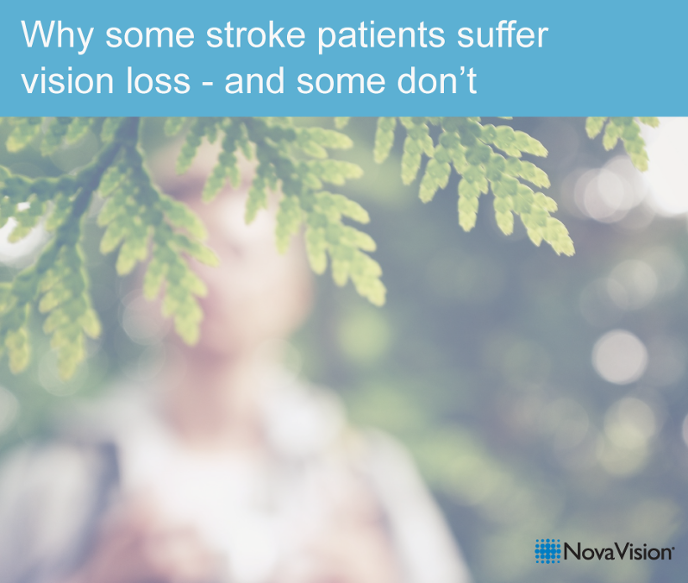We have mentioned in previous blog posts that vision loss after a stroke or other brain injury can often go unnoticed. Although some of this can be attributed to patients and doctors alike focusing on more threatening health issues after these traumatic events, it can often also be ascribed to the fact that patients have a difficult time communicating their visual impairment with the medical professionals in charge of their care.
What is Neurological Vision Loss?
The type of vision loss that results from a stroke or brain injury is referred to as neurological vision loss (NVL). Homonymous hemanopia is the most common type of NVI, and you can learn more about it here. This condition is defined as diminished vision or full vision loss in the left or right half of the visual field of one or both eyes.
Neurological visual impairments often involve either the loss of central vision, loss of vision on one side of the visual field or a loss of the entire field of vision. In some cases, people may be able to see both in front and to the sides but their vision will remain blurry. Others may see well in daylight but experience great difficulty indoors or at night.
Physical Eye Conditions
Unlike Neurological vision loss, other eye conditions may be more easily detected by the human eye as they are accompanied by visible symptoms. Since many of these conditions are more commonly known, they can often be more easily diagnosed and treated. If you are experiencing any changes to your vision, it is important to be aware of both types of vision loss so you can best communicate your symptoms to your doctors. Some common eye conditions that are not related to a Neurological event include:
Age-related Macular Degeneration– A degenerative condition affecting central vision.
Cataracts– A cloudiness that forms in the lens of the eye – the part that allows a focused image to be transmitted onto the retina. This cloudiness creates blurring, affecting both near and distance vision. Cataracts generally result from the ageing process, though they can also develop from other causes such as congenital disability (from birth) or trauma to the eye.
Glaucoma- An eye disease that damages the fine nerves connecting the eye to the brain. May result in tunnel vision and even total blindness.
Diabetic Retinopathy– Caused by diabetes, This condition may result in increasingly blurred, patchy and fluctuating vision
Retinitis Pigmentosa (RP) – A group of genetic eye disease that can result in total blindness. Common signs are inability to adjust to changes in lighting, night blindness, tunnel vision and reduced acuity.
How Neurological Vision Loss is Different
Unlike some of the conditions mentioned above, glasses or corrective lenses cannot repair Neurological Vision Impairment since the damage hasn’t been done to the eye itself, but the way the brain processes visual information. Luckily, there are therapies available to re-train your brain that may be able to significantly improve your vision. This concept is called Neuroplasticity and it refers to your brain’s natural ability to compensate for injury and to adjust to deal with these changes by creating new neural pathways and adapting as needed.
Now that you know a few of the important differences between these common conditions, it is important to stay on top of any possible visual impairments you may be suffering from. If you have recently experienced a stroke or other brain injury, specifically request a visual field examination from an optician or optemetrist. Even if your eyes have compensated, that doesn’t mean you have the ability to use 100% of your visual field. Your eyesight is precious and can have a significant effect on other parts of your recovery. Take care of yourself in all ways, don’t hesitate.



Recent Comments